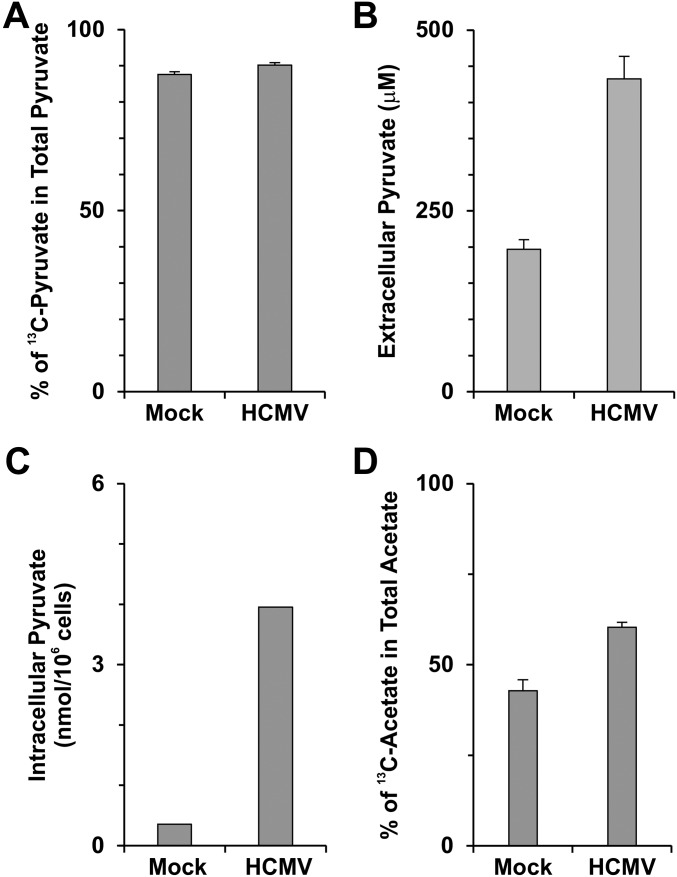Fig. S7.
HCMV infection enhances the production of pyruvate and acetate from glucose carbon. (A) The percentage of [3-13C]-pyruvate in total extracellular pyruvate. In the metabolic labeling experiment described in Fig. 5 E and F, nearly 90% of total extracellular pyruvate from mock- and HCMV-infected HFs was [3-13C]-pyruvate after 24-h labeling with 5.6 mM [1,6-13C2]-d-glucose, suggesting that pyruvate is produced mainly from glucose in both infected and uninfected HFs. Data are shown as the mean ± SD of triplicates. (B) Levels of total extracellular pyruvate from mock- and HCMV-infected HFs at 48 hpi. Data are shown as the mean ± SD of triplicates. (C) Levels of intracellular pyruvate in mock- and HCMV-infected HFs at 48 hpi. (D) Percentage of acetate made from glucose carbon in total acetate. In the metabolic labeling experiment described in Fig. 5E, [2-13C]-acetate detected in the cultured medium was ∼40% of the total extracellular acetate from mock-infected HFs; this level was increased to 60% in HCMV-infected HFs at 48 hpi. Data are expressed as the mean ± SD of triplicates.

